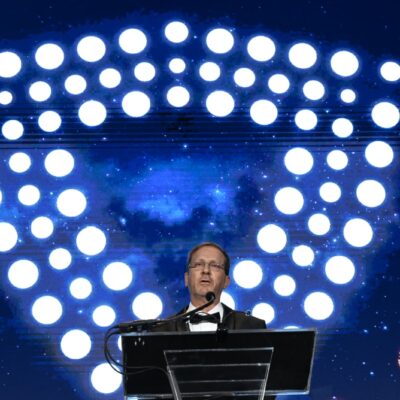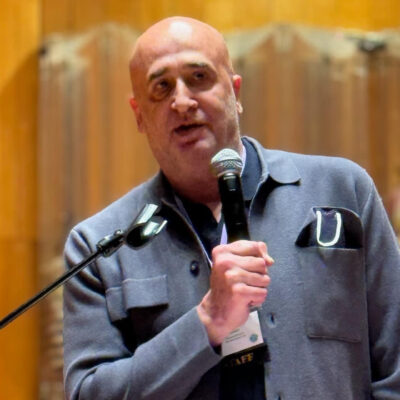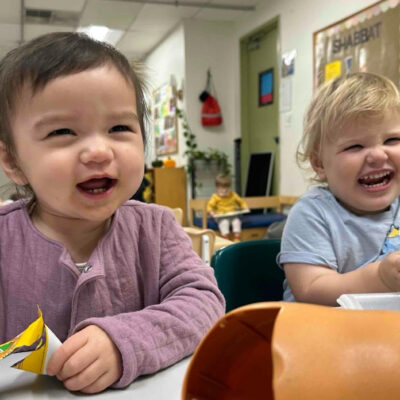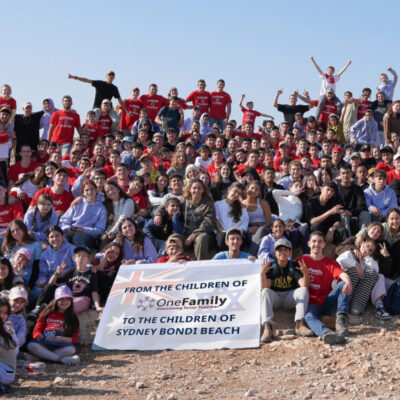AI for Good
‘Sir Hatch’ uses ChatGPT to make it easier, cheaper for nonprofits to talk to donors
Powered by artificial intelligence, Hatch’s virtual assistant is meant to supercharge the work of a copywriter, churning out personalized letters to potential funders in seconds

Courtesy/Hatch
Sir Hatch
When Hatch, an AI-platform that maximizes nonprofit fundraising, launched in July 2022, CEO Moshe Hecht had a vision for the company’s mascot, Sir Hatch. He dreamed that one day Sir Hatch – a dapper, bespectacled man in a suit with tails, a hat and sporting a mustache – would serve as a virtual assistant, helping users market their nonprofit to donors.
At first, the main thing Sir Hatch did was write blog posts, and these were even secretly drafted by a Hatch employee due to the virtual assistant’s technological limitations.
But then ChatGPT-4 was released in March 2023, and Sir Hatch’s potential grew exponentially. In no time, the mascot was drafting fundraising materials, letters, invitations, and “thank you” notes, individualized to specific donors, all generated more quickly than the time it took you to read this paragraph.
“I think it might take some people’s jobs,” Hecht told eJewishPhilanthropy about Sir Hatch. He said it was also likely to change the nature of the work that people are currently doing.
“If you’re a nonprofit, and you already have a copywriter, you should expect triple the amount of content coming from them every week. My advice to every nonprofit is not to fire copywriters, because you still need that human touch, just expect more from them… If you’re a small nonprofit, and you haven’t hired a copywriter yet, then you might not need to for a longer period of time.”
But the first draft Sir Hatch creates is not meant to be the final iteration. Sir Hatch allows edits and gives prompts to strengthen the writing. “You’re gonna need that human touch to stay relevant today,” Hecht said.
Initially, Hatch focused on compiling useful dossiers on potential funders. Using what the company calls “altruistic intelligence,” Hatch gathers legally obtained public data to create in-depth profiles of current and potential donors, which help nonprofits better connect with them. Hatch users can learn a potential donor’s occupation, where they went to school and even their hobbies. If a nonprofit is running a golf fundraiser, it can search for every donor who loves golf to specifically target them. Currently, Hatch has a beta cohort of just under 100 users.
And now, using Sir Hatch’s increased capabilities, nonprofits can easily reach out to those potential funders. They decide what type of campaign they are running, what length they want a letter to be, and what tone to adopt. Then Sir Hatch cooks up a draft individualized to specific donors.
“A lot of nonprofits are very reluctant to take on new technologies,” Hecht said, so his goal was to make Sir Hatch as easy as possible to use. “It’s integrated into a system that our customers are already using.”
Many fundraising modules are “very antiquated,” Rabbi Chanan Krivisky, an early subscriber who is director of MiYaD, a Chabad house in Jericho, N.Y., told eJP. He called AI fundraising a “game changer,” especially Sir Hatch, which makes it easier for nonprofits who may not be comfortable with the new technology. “AI in general should be more broadly implemented,” he said, “to get us to be able to connect with the people who mean the most to our organizations.”
Mendel Groner, the director of Friendship Circle International, an organization that cultivates relationships between teen volunteers and children with special needs, told eJP that he was “beyond excited” when he heard about ChatGPT. “When new technology came out, there were certain demographics in the Orthodox community who shied away from the technology,” Groner said. Indeed, just last week, the head of the Skver Hasidic movement banned all uses of artificial intelligence, saying that it was “open to all abominations, heresy, and infidelity without limits.”
Chabad, on the other hand, has historically embraced technology, from its online school system to its early adoption of the internet, based on the views of the late Lubavitcher Rebbe, Rabbi Menachem Mendel Schneerson.
“The Rebbe was always about leveraging this technology to add more good to the world,” Groner said. ”Back then we were talking about the radio, TV, what was top technology in the ’60s, ’70s, ’80s, and now we’re talking about something which is not fully explored. I think there’s a lot of good that AI can bring to the world.”
Two concerns Hecht had when creating Sir Hatch were security and data ethics. How do you ensure that the private details about donors from Hatch’s systems don’t wind up in the public databases that most AI systems currently rely upon? “When putting information into ChatGPT, you risk the chance of Microsoft Open AI taking that information, and then including it in their models,” said Hecht.
But there are ways to ensure that information isn’t misused. “ChatGPT can be safe if proper guardrails are put in place,” Reid Blackman, the CEO of Virtue, a digital ethical risk consultancy, the author of Ethical Machines, and a member of Hatch’s advisory board, told eJP. “At this moment, I recommend nonprofits be very careful with what personal information they share with ChatGPT, whether it’s about donors, the people they aim to help, or anyone else. Hatch has done this nicely, using it to generate messages to donors…without sharing the private information of those donors, including their names.”
To do this, Hatch tokenizes personalized data. “It’s similar to the way you give a credit card number when you’re shopping online,” Hecht said. A vendor never actually sees your credit card numbers because they are sent as a code that can only be processed by your credit card company. The personal information Sir Hatch uses is coded, too, so Open AI cannot use it. It’s about using “ChatGPT in a more sophisticated way,” Hecht said.

 Add EJP on Google
Add EJP on Google
















